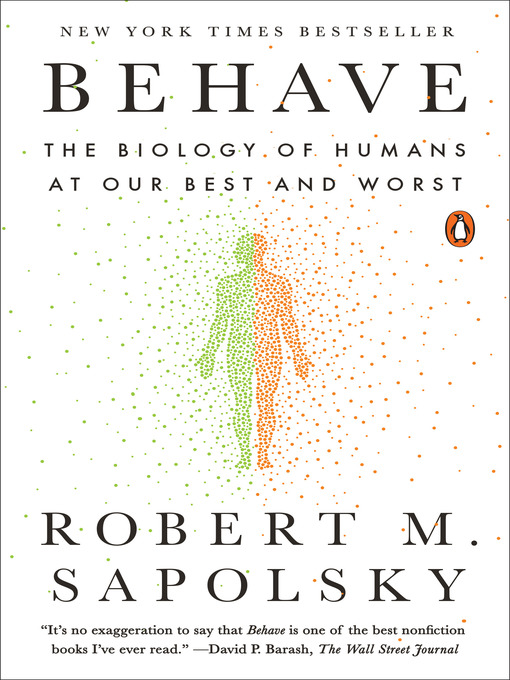
Behave
The Biology of Humans at Our Best and Worst
کتاب های مرتبط
- اطلاعات
- نقد و بررسی
- دیدگاه کاربران
نقد و بررسی

Starred review from March 20, 2017
Sapolsky (Monkeyluv), professor of biology at Stanford, looks at human behavior from myriad interrelated perspectives, endeavoring to explain humans’ strange and often contradictory behavior. He predominantly focuses on exploring “the biology of violence, aggression, and competition” through the lenses of neuroscience, anthropology, psychology, genetics, evolutionary biology, political science, and communication theory. Sapolsky takes complex ideas from the scientific literature, including his own research, and attempts to balance the pros and cons of every conclusion. He weaves science storytelling with humor to keep readers engaged while advancing his main point about the complexity and interconnectedness of all aspects of behavior. For Sapolsky, context is everything. For example, in discussing genetics he urges readers to “repeat the mantra: don’t ask what a gene does; ask what it does in a particular context.” Understanding such complexity can potentially lead toward a more just and peaceful society, Sapolsky says. He recognizes that this ambition may “seem hopeless” but argues that it is essential. Finally, he contends and demonstrates that “you don’t have to choose between being scientific and being compassionate.” Sapolsky’s big ideas deserve a wide audience and will likely shape thinking for some time. Agent: Katinka Matson, Brockman Inc.

Starred review from March 15, 2017
A wide-ranging, learned survey of all the making-us-tick things that, for better or worse, define us as human.Do bacteria have moral understanding? Do fleas have emotions? Such questions are meaningful, especially when, as MacArthur Fellow Sapolsky (Biology and Neurology/Stanford Univ.; Monkeyluv: and Other Essays on Our Lives as Animals, 2005, etc.) writes, it is possible to describe some of the actions of E. coli as altruistic. A distinguished primatologist, the author works broadly in the life and social sciences to examine human behavior, manifestations of which, he writes, belong to the nervous system and to sensory stimuli--and all of which make for a -big sprawling mess of a subject.- Thus, this fittingly long book, which opens with the problem of defining terms--aggression, sympathy, even love--and proceeds by exploring every nook and cranny. Some of our behavior is purely mechanical, with payoffs in dopamine, that -invidious, rapidly habituating reward.- Other aspects are located at the intersection of nature and nurture, as with the plummeting U.S. crime rate in the 1990s, attributable in part to accessible abortion--for, as Sapolsky notes, nothing is quite so sure to lead to a life of crime as -being born to a mother who, if she could, would have chosen that you not be.- As the narrative progresses, it ascends into headier realms, examining problems both biologically and philosophically. Can there be a science of morality? If so, how is it best addressed? The answers are as thorny as the questions: -If harm to the person who is the means is unintentional or if the intentionality is really convoluted and indirect, I'm a utilitarian consequentialist, and if the intentionality is right in front of my nose, I'm a deontologist.- Those answers may not satisfy strict sociobiologists on one hand or Heideggerians on the other, but they're unfailingly provocative, as is Sapolsky's closing observation that whenever we talk of human nature or natures, we're talking about averages in a world of endless variation. An exemplary work of popular science, challenging but accessible.
COPYRIGHT(2017) Kirkus Reviews, ALL RIGHTS RESERVED.

January 1, 2017
Stanford primatologist/neurobiologist Sapolsky harvests ideas from numerous disciplines to explain why we do what we do, starting with what happens with the brain directly before an act and moving up to genetic, cultural, and evolutionary factors. Finally, he explains how all this activity leads to "our best" (e.g., morality) and "our worst" (e.g., warfare).
Copyright 2017 Library Journal, LLC Used with permission.

























دیدگاه کاربران